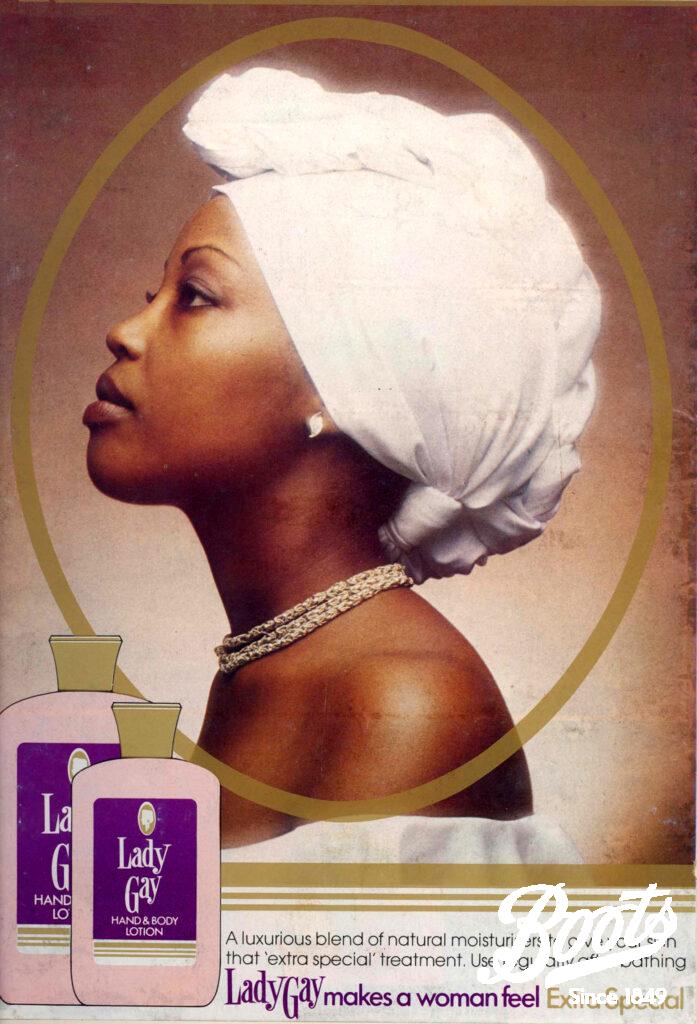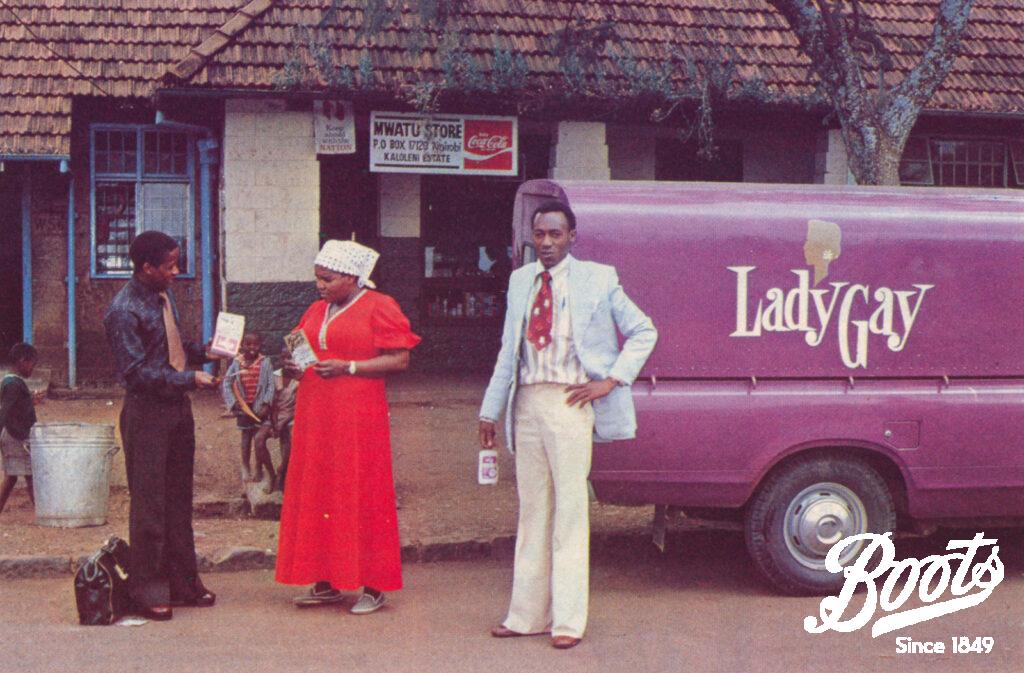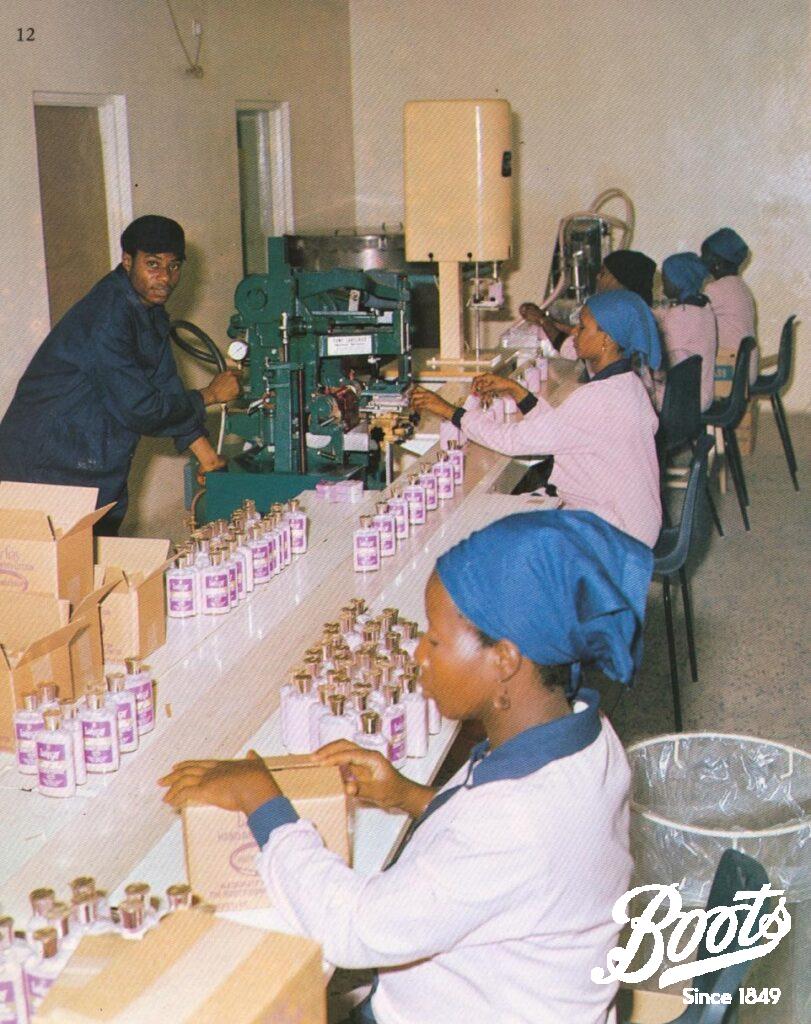
Time to read
Lady Gay: Perfumed beauty products for Africa
In 1971, Boots launched its Lady Gay perfume in South Africa with a dazzling beauty competition, celebrating African beauty and marking the company’s entry into a growing and modern African consumer market.
On Saturday 16 October 1971, fifteen women took to the stage at the Progress ’71 Exhibition, a trade fair held in Soweto, a predominantly Black township on the south-west edge of Johannesburg, South Africa. These contestants were the grand finalists of the Lady Gay Beauty Competition, an event organised by Boots’ South African subsidiary to launch its new perfume, Lady Gay. For fifteen consecutive nights, local women competed in heats while three female demonstrators, dressed in striking uniforms, distributed free samples from the Lady Gay cosmetics bar. The winner, whose name regrettably went unrecorded in the firm’s report to Nottingham, received a crown, a sash and a cheque from Stan Slabbert, head of Boots Company (South Africa). Slabbert boasted that the event had drawn the largest crowd ever seen at an “African Beauty” contest.
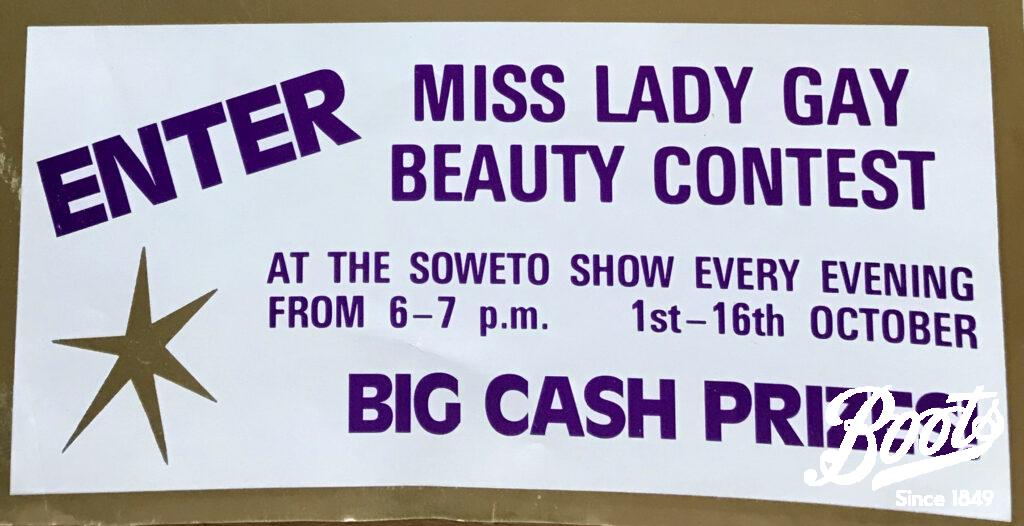
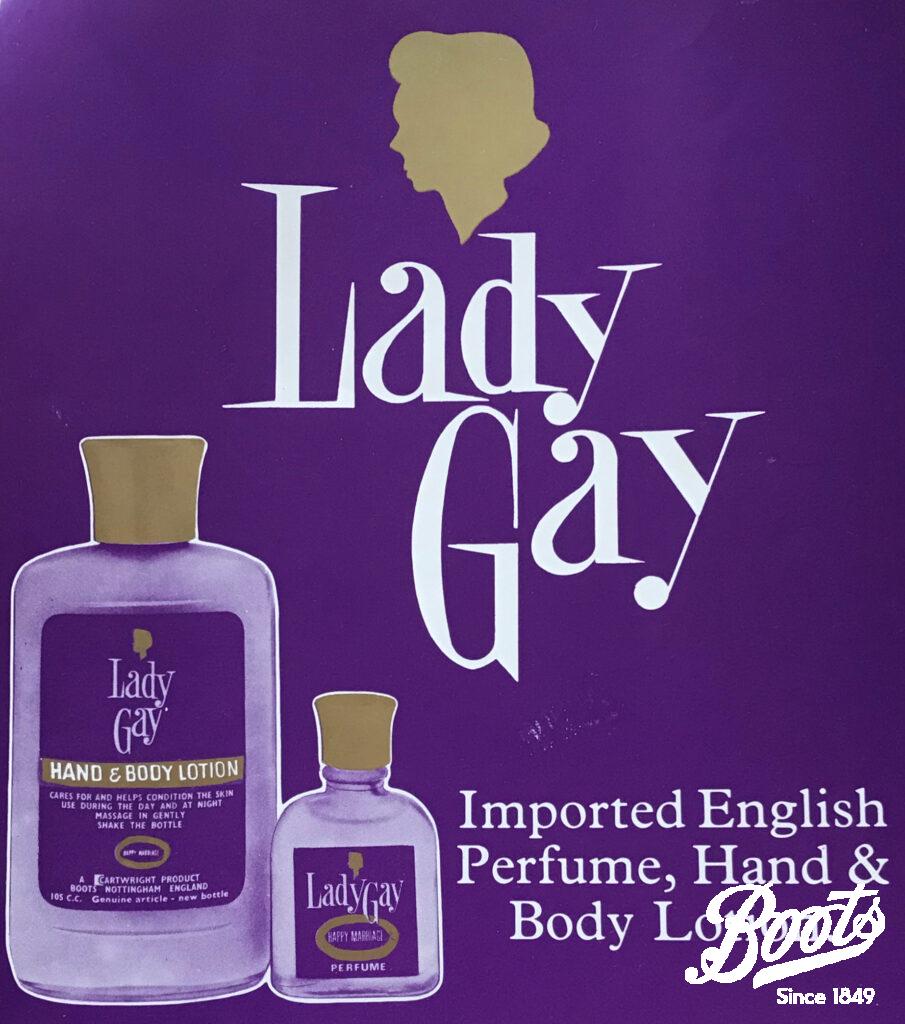
Lady Gay perfume was the primary product Boots used to address Black African consumer markets at the end of the 1960s. The 1950s and 60s was a period of significant transformation across the African continent. African countries were becoming independent, while former colonial powers, eager to maintain influence, turned to economic partnerships and development programs as alternatives to direct colonial rule. As foreign investment flowed in, countries like Ghana, Nigeria, and Kenya experienced greater levels of industrialisation and urbanisation. This, in turn, contributed towards a growing middle class. These “new consumer-citizens of independent Africa”, as sociologist Thomas Blair termed them in 1965, were forging an independent, cosmopolitan identity that was expressed, in part, through their purchasing decisions.
Boots aimed Lady Gay at this same demographic– “urban women, housewives and sophisticated girls”, as described in one market research report. Lady Gay already had a long history. Originally launched in Britain in 1931 by W. B. Cartwright, Ltd., a manufacturer based in Leeds, it promised British women an “easy and inexpensive […] perfume of rare and exquisite loveliness.” Although it achieved only modest sales in the UK, by the mid-1960s, Cartwright had expanded the Lady Gay range to include scents, shampoos and toilet soaps, which it successfully exported to Africa. Seeking to build Boots’ reputation among Black Africans, the company bought the brand from Cartwright in 1969.
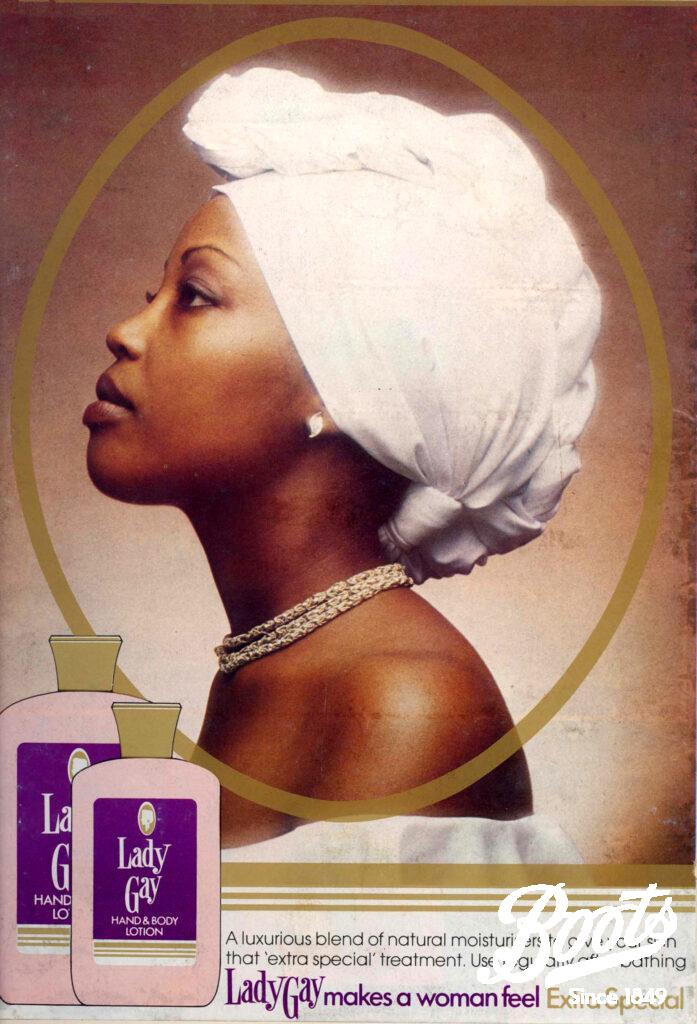
With little experience of selling directly to Africans, the International Division in Nottingham commissioned research into different African markets. In 1971, for instance, Export Manager, Ken Robinson, toured Nigeria for four weeks to visit Kaduna and Kano in the north and Ibadan and Lagos in the south. At each stop he interviewed local wholesalers, pharmacists and retailers, along with the female market traders who dominated commercial life in Nigerian towns and villages.

A plan was formed for the country: Lady Gay would be sold by a team of twelve salesgirls, supported by three Lady Gay vans in the brand’s distinctive purple-and-gold colour scheme. Each van had multiple functions – a means of distribution, an eye-catching advertisement, and a mobile shop that allowed salesgirls to stop in passing towns and offer impromptu demonstrations. Packaging was uniform across the range. Lady Gay’s bold colours and prominent logo (a woman’s head in profile) enabled customers to recognise the brand in areas with low literacy rates.
Lady Gay remained a steady seller for Boots in many African countries until the end of the 1980s. However, the brand struggled in South Africa despite a successful launch at the Soweto Progress ’71 exhibition. The main reason for this was Apartheid. In other African countries, Lady Gay resonated with women’s desire for cosmopolitanism and modernity, an international product for a confident new Africa. But in South Africa, products marketed exclusively to Black South Africans carried inescapable connotations of inferiority, a reminder of structural oppression. Faced with poor sales in the initial months, Boots scaled back its marketing efforts, and by late 1972, Lady Gay appears to have been withdrawn from the South African market.

Image Gallery
WBA/BT/NI/4/1 A promotional photo from the early 1980s featuring products from the ‘Lady Gay’ range, showcasing items such as perfume, hand and body lotion, talcum powder, and soap.
WBA/BT/12/30/29 Promotional poster for the Miss Lady Gay Beauty Contest, held at the Progress ’71 Exhibition in Soweto, South Africa.
WBA/BT/12/30/29 ‘Lady Gay’ promotional poster, c1970s.
WBA/BT/11/55/13 ‘Lady Gay’ merchandise sticker, c1970s.
WBA/BT/11/45/2/262 ‘Lady Gay’ advertisement. Publication unknown, c1970s.
WBA/BT/27/39/2/5/153 Photograph from the August 1980 issue of Boots News, featuring a ‘Lady Gay’ branded van and sales team engaging customers in Nairobi, Kenya.
WBA/BT/NI/8/1 Photograph of the packaging operations for the ‘Lady Gay’ product range in Nigeria, c1980.


